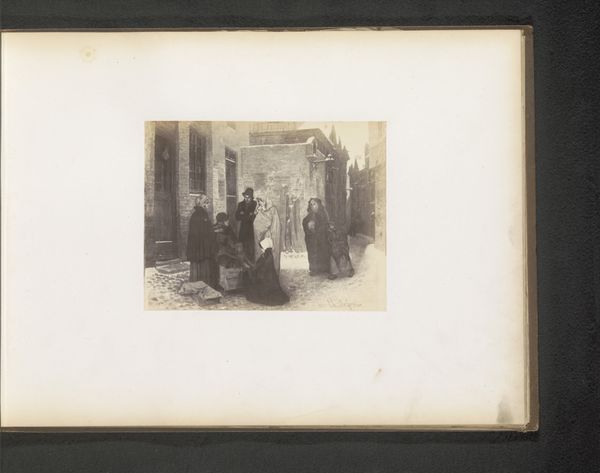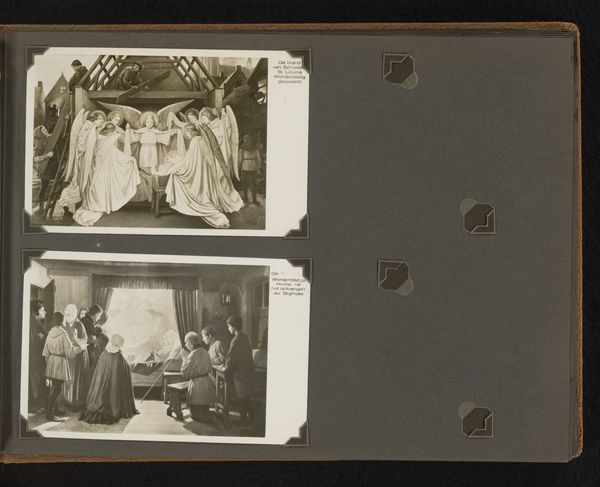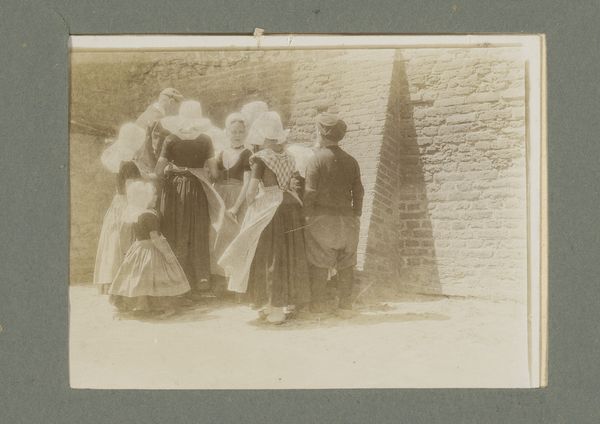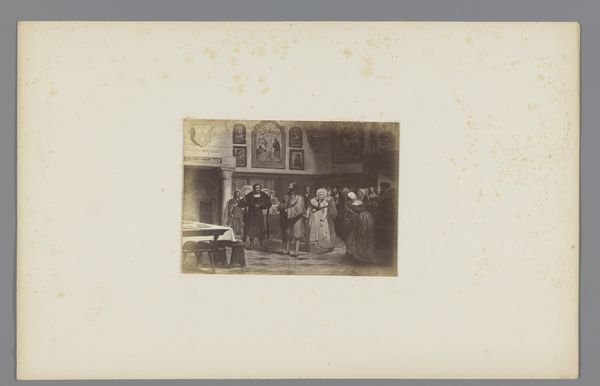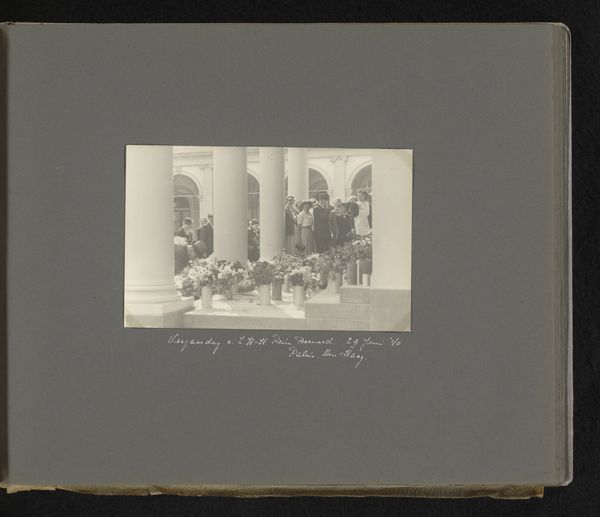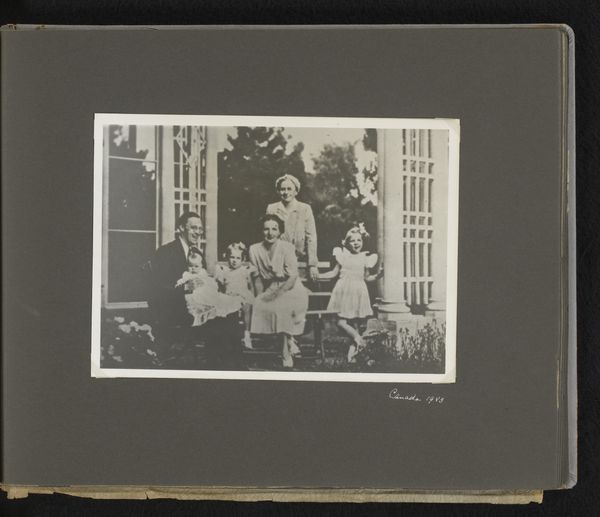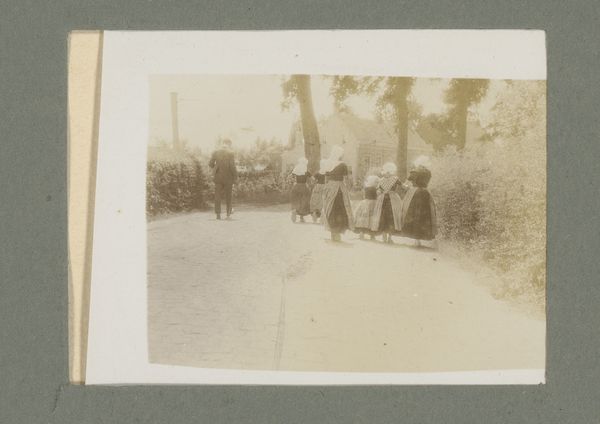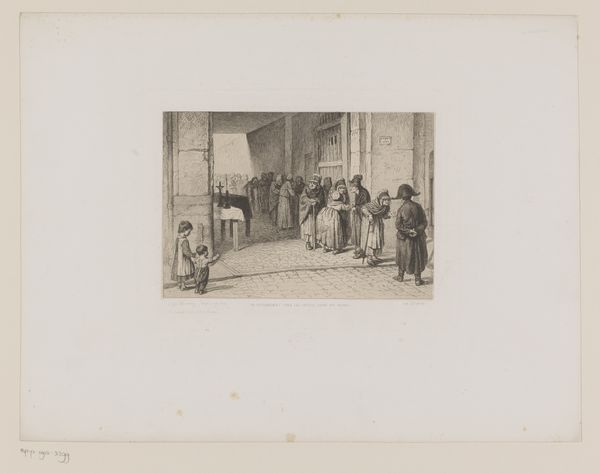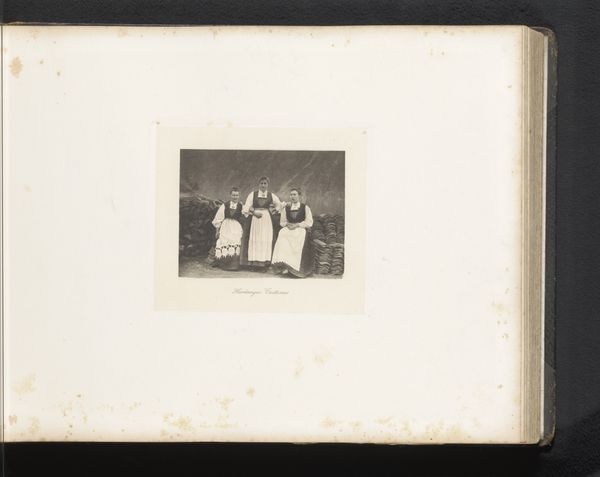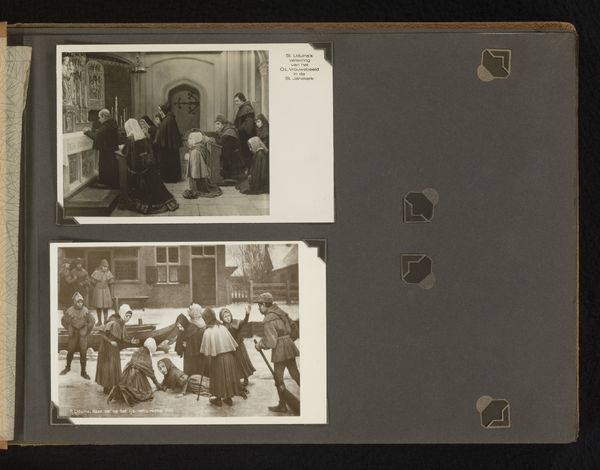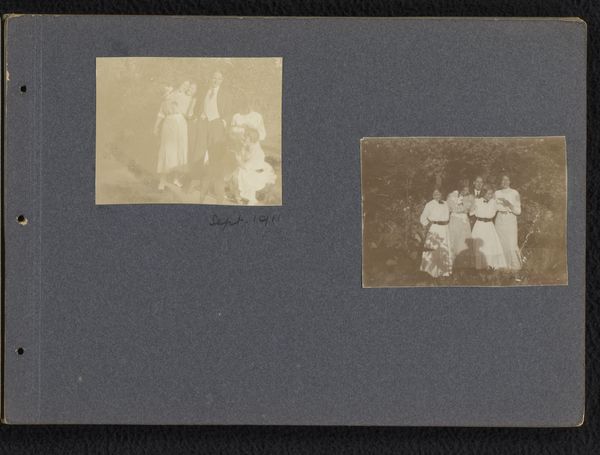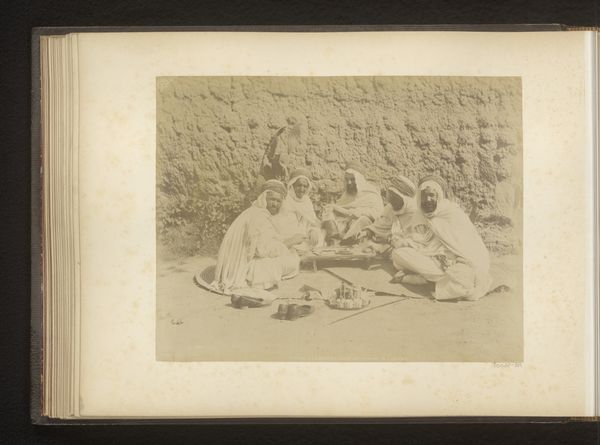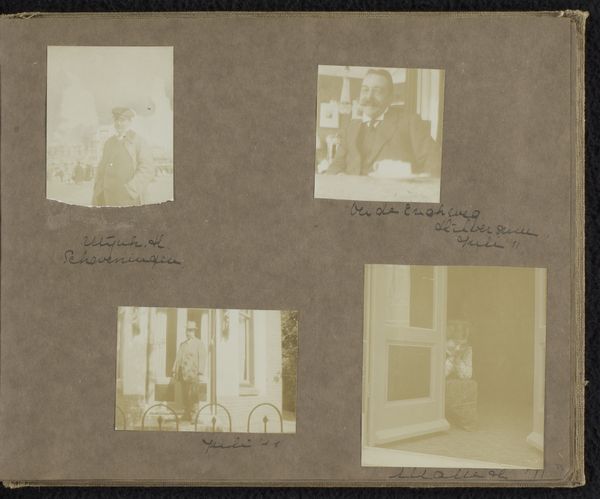
photography, gelatin-silver-print
#
photography
#
gelatin-silver-print
#
genre-painting
#
realism
Dimensions: height 68 mm, width 111 mm, height 125 mm, width 210 mm
Copyright: Rijks Museum: Open Domain
Curator: This is a photograph by A.G.A. van Eelde, likely taken in 1927. It's titled "Groep jongeren in Oudaghir, Le Figuig," which translates to "Group of young people in Oudaghir, Le Figuig," and it is printed as a gelatin-silver print. What do you make of it? Editor: There's something wonderfully austere about it. Stark light, the tones just hinting at life. A watchful group captured in what feels like a timeless, sun-baked place. It reminds me a bit of colonial-era postcards, but there's a quietness that undercuts that. Curator: It’s important to remember van Eelde’s social context here. Photography in this era often functioned as a tool for documentation, sometimes reinforcing prevailing social hierarchies, or exoticizing particular cultures. But, as part of that context, photos such as this can today invite different viewpoints of the time period. Editor: Absolutely, the photographic record offers a double-edged vision. What strikes me is the balance the photographer strikes. Despite its time, it captures them with a certain dignity. Do you think Van Eelde intentionally tried to approach things with this neutrality or do you see this more of an unavoidable result of the technologies available at that time? Curator: The question of intention is a tricky one. But I think a realism lens reveals how even “objective” depictions inevitably reflect a worldview. In that period many were turning away from pictorialism, embracing a starker representation, often highlighting social realities that might not be flattering. I find this shot, a good example of a style aimed at unfiltered presentation. Editor: You're right. Thinking about how art and cultural context shape photography… there is something deeply haunting about its stillness. The sun-drenched light almost feels symbolic now of the era in which this image was taken. A place and a time we can't return to and a scene of lives that have now passed, but immortalized in this print. It makes you wonder about their stories, and their community’s role within broader historical narratives. Curator: It invites us to contemplate not only the subjects, but also the photographer’s gaze, and the ever-evolving narrative we construct around images from the past. These faces echo the questions we bring to them, creating an experience, unique in every moment of contemplation.
Comments
No comments
Be the first to comment and join the conversation on the ultimate creative platform.
